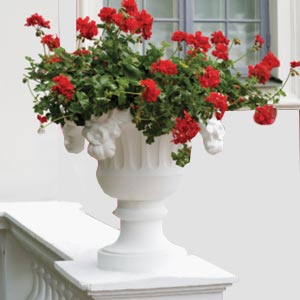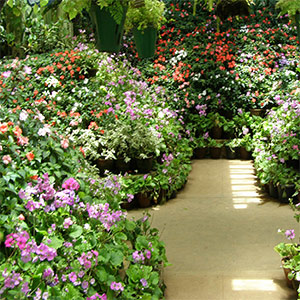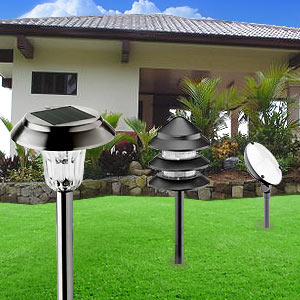Container Garden

If you live in multi-storied apartment, let not the absence of a traditional garden deter you! Container gardening is the reawakened gardening concept with numerous opportunities to grow plants of your choice, right on your windowsill, balcony, roof, patio or deck. Bring nature into your home by raising fresh, nutritious, homegrown vegetables and amazing variations of flowers in a riot of colors.
Read through to learn and create your own container garden. Though there are no strict rules to be adhered to, consider some basic points that can ensure a successful container garden. Be informed about the different types of containers, their shapes, sizes and materials. Select your container plants and learn to choose the right container to go with the right plant. From spring bulbs to winterberries, almost anything is possible with container gardening. Get ready to discover the joys of container gardening.
Container gardening
Asparagus, pumpkins, corn, and apples, peaches, pears, figs, and bananas –choose your favorites to add to your container garden. A popular gardening concept, container gardening enables display of plants in containers around the house and yard too. Container garden ushers beauty adds freshness and accentuates areas such as sun decks, barbecue areas, garden shelters, swimming pools and tennis courts.
- For apartment and condominium dwellers with space limitations for a traditional garden
- For those who live in extreme cold regions where frost and cold put a halt to outdoor gardening.
- For those who like to experiment with variety. A container garden makes it possible to select a theme each year and change plants to create a whole new garden.
- For those who are incapacitated to create their own traditional gardens (due to physical restrictions)
- For those who prefer to experiment with color and flowers in an existing landscape. Barrels of petunias placed along garden paths can transform and renew the landscape.
- For those who care to bring green and fragrance inside their home all year round.
Container garden
Mobility: If deemed necessary, plants in container garden can be shifted to better places during the rainy or cold season. May be for want of more sunlight and air or protection from excess sunlight, container plants can be repositioned. Container garden plants can be taken along with you, in case of shifting to a new home. Not to forget, using a container plant as a decorative piece can add color and fragrance to bare or dull areas.
Pest control: As such, plants in containers are generally less susceptible to pests and diseases. Container gardening offers instant protection to plants from soil borne diseases, nematodes or poor soil. In case, a particular plant is infected it's easier to move the container and treat the plant with appropriate sprays. The other plants aren't disturbed and can remain in the same place.
Yet another advantage is that you can select certain plants that emit allelochemicals from their roots or leaves. These plants can be arranged in such a way that it repels pests and safeguards other plants. For example, hoverflies can bother your fennel plants. Try placing it next to sweet basil container that can frighten away the hoverflies.
Work of art: Container gardens can be easily planned, designed and maintained by you. Put your creative skill to test and craft a garden that is attractive and useful. Savor the emotional benefits that container gardening can give you.
Container vegetable gardening, container herb gardening, annual container gardening denotes the various concepts that exist. While the first two implies a garden with vegetables and herbs respectively, annual container refers to perennials. Once you have decided the concept, choose the right plants.
Choose ideal container plants
If you envision a container garden blooming with all kinds of plants that you wish to see, smell, touch or even eat, prepare a list. Check their suitability, compatibility and feasibility by analyzing factors such as
- Local climatic conditions
- Scale or size of container garden
- The design and site (indoor/outdoor)
- The width and height of containers
- How fast or slow plants grow
- Other companion plants
- Success rate of growing in containers
After completing this exercise, you will know what plants will thrive in your container garden. Proceed further and draw up a plan for a modest beginning. Keep abreast of new varieties of container plants. Awaken the botanist in you, get equipped with all relevant information required to make it a successful project.
Guide to selecting plants for container garden
Trailers, fillers, uprights indicate the growing patterns of various plants. Large blooms, medium sized blossoms and cluster blooming of plants indicate how the plant might look in a container. Tall stalks, medium sized stalks, ones with no stalks indicate the height of the plant. And of course, the color of leaf and flowers must also be considered. While buying seed packets, go through the instructions that is provided. You and your garden can benefit from help from the local nursery too.
Bulbs in containers: Tulips, daffodils, hyacinth, snowdrop, iris, bluebell, tiger flower, Muscari (Grape Hyacinths), Crocus, Ranunculus and Freesia are popular bulbs suitable for growing in containers.
Food and herbs: Basil, Mint, Capsicum, Parsley, Chives, Patio Tomatoes, Dwarf fruit trees, Strawberries, Mandarin, Thyme, Meyer Lemon, Cilantro (coriander), Garlic, Ginger, Scented Geraniums, Sesame. These are examples of plants of the food and herb category that can be grown in containers.
Vegetables and fruits: Apple, Fig, Eggplant, Cucumber, Lettuce, Spinach, Cabbage, Cauliflower, Bean, Radish, Blueberry, Potato, Turnip are some examples of vegetables and fruit plants that can be grown in containers.
Flowers: Alyssum, Pansies, Begonias, Petunias, Impatiens, Salvia, Lobelia, Verbena, Marigolds, Daylily, Begonia, Zinnia, Dwarf Snapdragon, Rock Jasmine are example of colorful flower plants that can be grown in containers.
Shrubs and Trees: Crape Myrtle and Bougainvillea can be successfully grown in containers.
Plants selected should have the same light and water requirements. Remember the bloom times and do not mix and match plants that have different bloom times.
Container garden guide
Container: Antique appliances, old buckets, discarded kitchen pots, baskets or traditional pots; you can select one that matches your sense of style. Ensure that the container has adequate drainage holes in the bottom. Try to strike a balance so that each container complements the plant aesthetically and supports its functions. The size, material and shape of the container should not in any way hamper the plant's growth or have a negative impact on your surroundings.
Hanging baskets made of wood or wire, window boxed made of wood or plastic, wooden troughs or baskets, terra cotta pots, stone containers, plastic pots are examples of popular containers.
- Do not select containers with narrow opening or of small capacity
- Smaller containers may dry faster and demand more water.
- Have adequate drainage holes. Holes should be 1/2 inch across
- Avoid cheap plastic pots, likely to deteriorate in UV sunlight.
- Hanging baskets should be lined with moss to increase water retention
- Ordinary wooden containers are more prone to rotting
- Redwood or cedars are durable, resistant to rotting.
Potting soil: If the potting is not good enough, the plants will never have a chance to grow well. Hence, container garden requires special potting soil that will not pack like a brick and will hold the water, nutrients and oxygen. This ensures success and very soon you can see the results in the form of lush, healthy stems, leaves and flowers. Remember, you cannot use soil taken straight from the traditional garden as it has a tendency to turn into concrete and then your tender plant roots will not be able to grow.
You can purchase packaged potting soil available at local garden centers. High-quality potting soil is specifically designed to cater to the needs of container garden enthusiasts. It contains organic matter, which helps to retain moisture and also nourishes the plants. On the other hand, you can prepare your own mix with the help of a professional gardener.
Watering: Plants in containers tend to lose moisture rapidly. Make it a practice to check your containers at least once a day. During hot, dry or windy days, it is beneficial to check twice. While checking the containers, feel the soil. Determine the dampness of the soil. Accordingly decide on the watering need of the plant. Some plants may require daily watering irrespective of the dampness. If required, consider an automatic drip emitter irrigation system to ensure availability of water for plants without a break.
Feed the plants well, watered well and keep them clean and healthy. The general care every plant requires is applicable even for a container garden. Move the plants to cooler spots or shade if directly exposed to sunlight, a sheltered location during severe rain or frost. Inspect the plants often to ensure protection from insects or diseases.
Top of the Page: Container Garden
Tags:#container garden

Eco Friendly Homes
Garden Maintenance
Organic Gardening
Vegetable Garden Layout
Xeriscaping
Hydroponics Gardening
Feng Shui Garden
Ornamental Plant
Container Garden
Growing Succulents Indoors
Landscape Design Idea
Herb Garden Design
Window Garden
Lawn Mowing
Lawn Maintenance Tips
Orchid Care
Bonsai Tree
Cactus Plant
Thanksgiving Cactus
Rock Garden
Gardening Accessories

Bird Feeder
Leaf Blower
Solar Bird Bath
Lawn Sprinkler System
Outdoor Garden Furniture
Garden Fountain
Butterfly Garden
Electric Lawn Mower
Garden Pond
Landscaping

Landscaping
Landscape Lighting
Outdoor Canopy
Solar Garden Lights
Garage Plan
Home Improvement
Home Furnishing
Home Improvement Catalog
Feng Shui
Top of the Page: Container Garden
Popularity Index: 101,335

